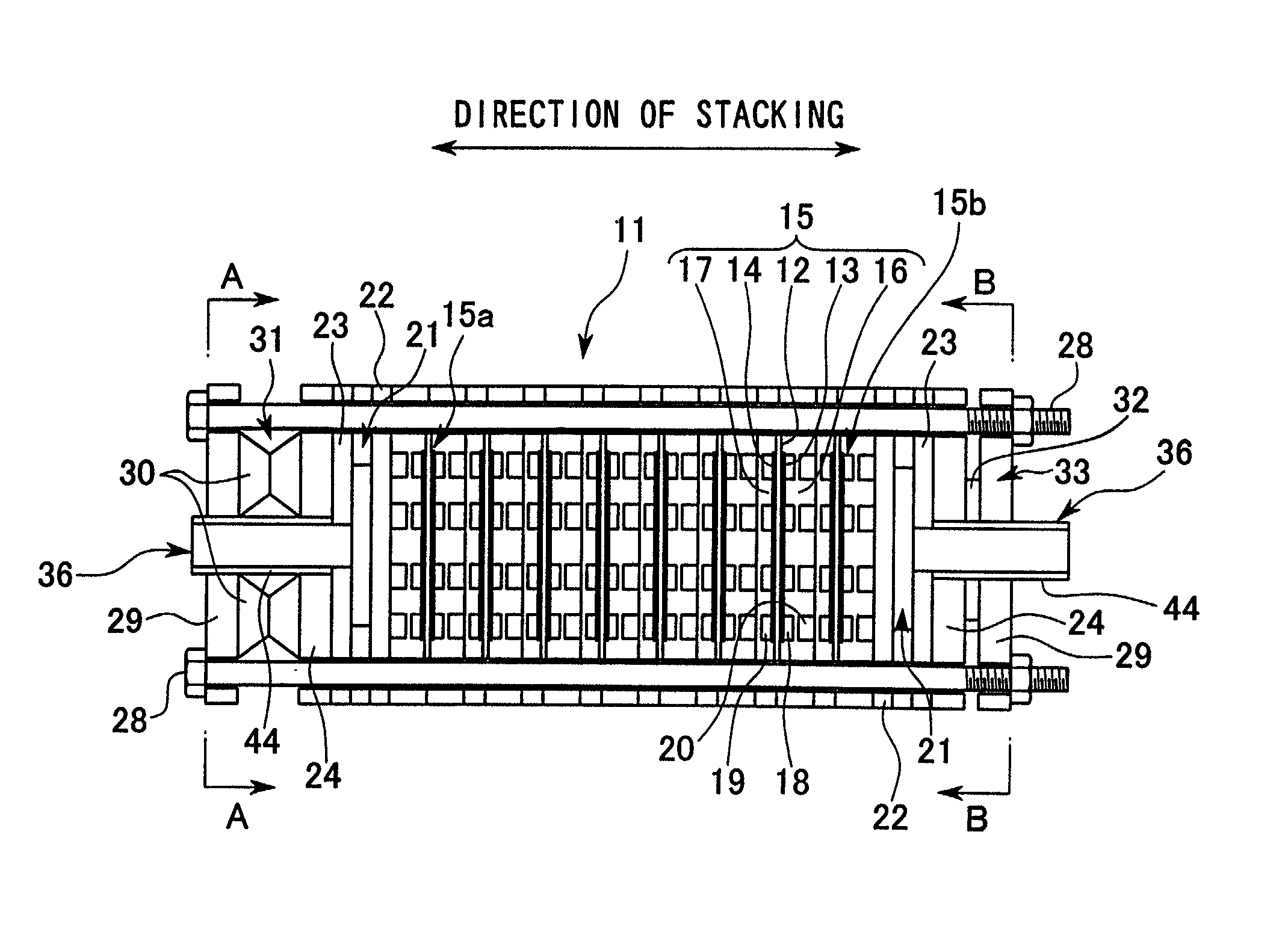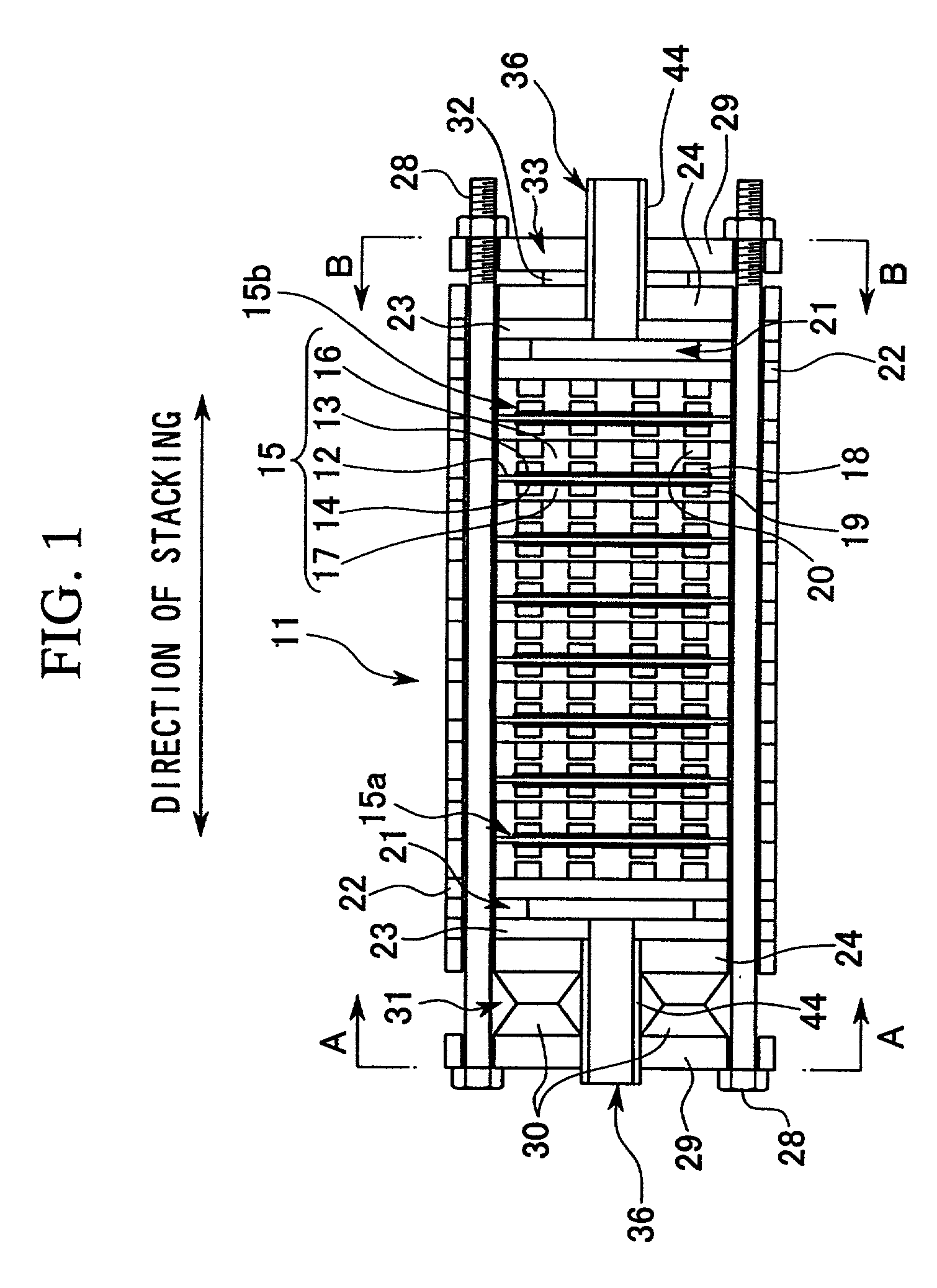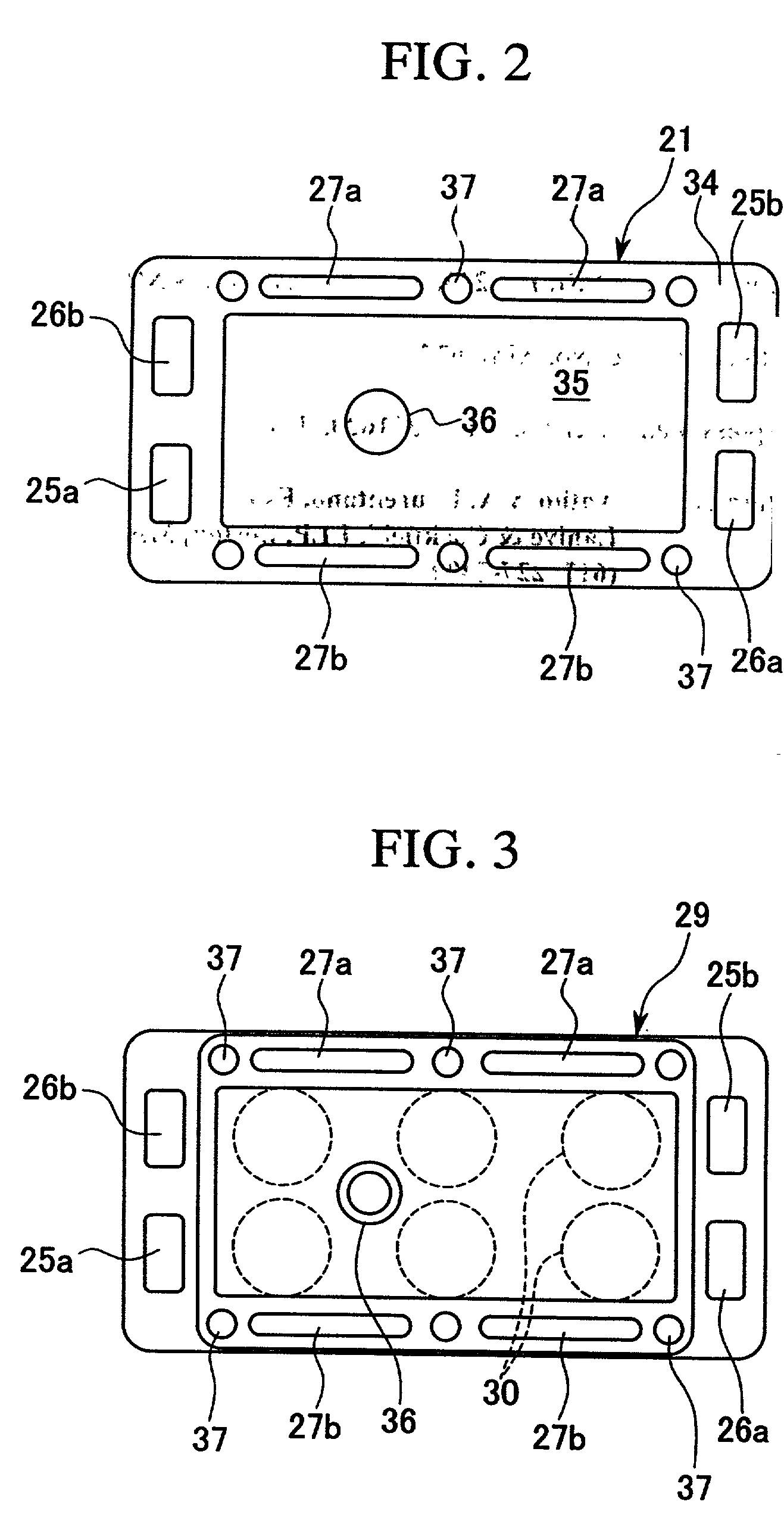Fuel cell stack
- Summary
- Abstract
- Description
- Claims
- Application Information
AI Technical Summary
Benefits of technology
Problems solved by technology
Method used
Image
Examples
Embodiment Construction
[0043] The preferred embodiments of the present invention will be explained with reference to the accompanying drawings.
[0044] In FIG. 1, reference symbol 11 indicates a fuel cell stack which is to be used in a vehicle.
[0045] The fuel cell stack 11 is a so-called solid polymer electrolyte fuel cell stack comprising a plurality of fuel cell units 15 stacked together in the horizontal direction each of which comprises a solid polymer electrolyte membrane 12, i.e., an electrolyte, an anode electrode 13 and a cathode electrode 14 which together hold the solid polymer electrolyte membrane 12 therebetween, and a pair of separators 16 and 17 holding the anode electrode 13 and the cathode electrode 14 therebetween.
[0046] Passages 18 for allowing a fuel gas, e.g., hydrogen, to flow are formed between the anode electrode 13 and the separator 16 adjacent to the anode electrode 13. Passages 19 for allowing an oxidizing gas, e.g., an oxygen-containing gas or air, to flow are formed between the c...
PUM
 Login to View More
Login to View More Abstract
Description
Claims
Application Information
 Login to View More
Login to View More - R&D
- Intellectual Property
- Life Sciences
- Materials
- Tech Scout
- Unparalleled Data Quality
- Higher Quality Content
- 60% Fewer Hallucinations
Browse by: Latest US Patents, China's latest patents, Technical Efficacy Thesaurus, Application Domain, Technology Topic, Popular Technical Reports.
© 2025 PatSnap. All rights reserved.Legal|Privacy policy|Modern Slavery Act Transparency Statement|Sitemap|About US| Contact US: help@patsnap.com



